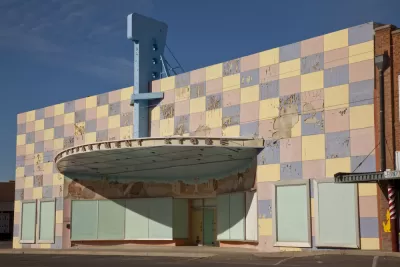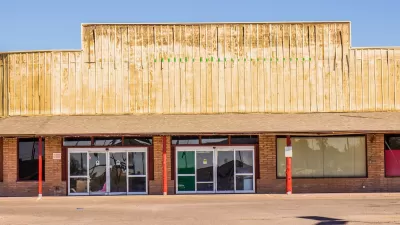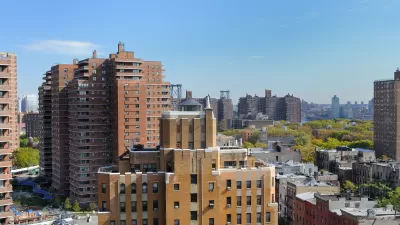The Phoenix City Council has taken the first steps toward zoning reforms that can balance out the oversupply of retail spaces at one end of the market and the lack of housing units at the other.

Jessica Boehm reports that Phoenix city officials are attempting to kill two land use birds with one stone by making it easier to covert vacant storefronts into housing.
"Phoenix has a lot of retail space — an average of 40.5 square feet of retail per capita, compared to 28 square feet nationwide," writes Boehm for context on the retail context. Like many cities, retail struggled in the years leading up to the pandemic, and major retailers like Sears and Toys "R" Us have vacated their physical stores. The pandemic added additional disruption.
On the flip side is the city's housing market, which, according to a recent study [paywall], is short 163,067 units. While the article allows some debate about whether there is an unhealthy amount of retail vacancies in the city, the housing supply shortage is never questioned.
As explained by Boehm, the effort was still in the brainstorming stages at an October council meeting, and the idea of providing incentives to convert retail spaces onto residential units is only one of numerous ideas currently on the table. According to Boehm, other ideas for easing pain at both ends of the real estate market include increasing the height and density for residential development, allowing some uses requiring special permits (e.g., tattoo shops, massage therapy, and self storage facilities, as well as microbreweries, distilleries, and data centers) to operate in commercial zones, and reducing minimum parking requirements.
The source article also details some of the redevelopment projects already converting underutilized commercial parcels in the city—even without zoning changes.
FULL STORY: Could replacing vacant storefronts with housing help Phoenix's severe housing shortage?

Study: Maui’s Plan to Convert Vacation Rentals to Long-Term Housing Could Cause Nearly $1 Billion Economic Loss
The plan would reduce visitor accommodation by 25,% resulting in 1,900 jobs lost.

North Texas Transit Leaders Tout Benefits of TOD for Growing Region
At a summit focused on transit-oriented development, policymakers discussed how North Texas’ expanded light rail system can serve as a tool for economic growth.

Why Should We Subsidize Public Transportation?
Many public transit agencies face financial stress due to rising costs, declining fare revenue, and declining subsidies. Transit advocates must provide a strong business case for increasing public transit funding.

How Community Science Connects People, Parks, and Biodiversity
Community science engages people of all backgrounds in documenting local biodiversity, strengthening connections to nature, and contributing to global efforts like the City Nature Challenge to build a more inclusive and resilient future.

Alabama: Trump Terminates Settlements for Black Communities Harmed By Raw Sewage
Trump deemed the landmark civil rights agreement “illegal DEI and environmental justice policy.”

Dear Tesla Driver: “It’s not You, It’s Him.”
Amidst a booming bumper sticker industry, one writer offers solace to those asking, “Does this car make me look fascist?”
Urban Design for Planners 1: Software Tools
This six-course series explores essential urban design concepts using open source software and equips planners with the tools they need to participate fully in the urban design process.
Planning for Universal Design
Learn the tools for implementing Universal Design in planning regulations.
City of Santa Clarita
Ascent Environmental
Institute for Housing and Urban Development Studies (IHS)
City of Grandview
Harvard GSD Executive Education
Toledo-Lucas County Plan Commissions
Salt Lake City
NYU Wagner Graduate School of Public Service





























